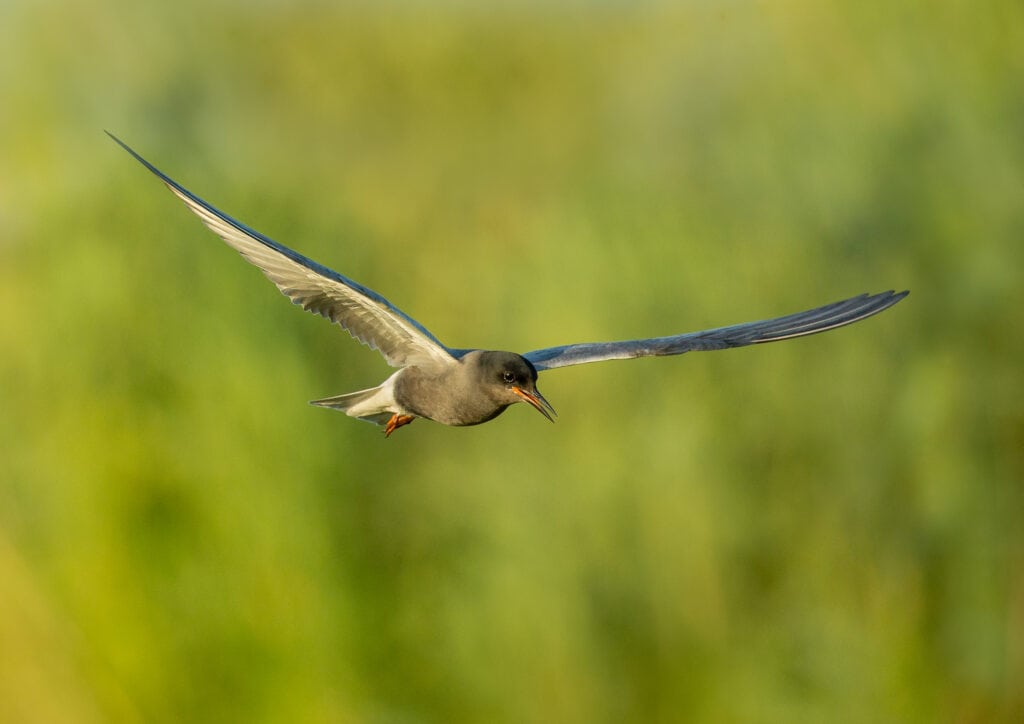The Black Tern belongs to an interesting and unfortunate club. Considered common, these birds are absent from the Endangered Species List and excluded from the protections and conservation campaigns from which “endangered” animals benefit. Despite being “common,” the Black Tern is spiraling toward disaster.
Related Article: Warming Climate May Be Causing Migratory Birds to Produce Fewer Offspring
Global Black Tern populations are in steep decline and North America’s Black Tern population has by a bout half in the last five decades. While this may not rise to the level of a bird whose populations have entered the double digits, like the imperiled California Condor, Black Tern populations are in serious trouble. It is vital that the work is done to conserve and protect them before their situation rises to the level of near-extinction.
This is the aim of a study conducted jointly by the National Audubon Society and Michigan State University. The study involved tracking Black Terns from the Great Lakes region in Michigan as they embarked on their southern migration to Central and South America. The Great Lakes are a vital breeding territory for this species. Alarmingly, as populations have declined by about 2% per year nationally, Michigan’s Black Tern population is shrinking by a rate as high as 7%. Already, it is estimated that Michigan has lost 99% of its Black Tern population. Black Terns are the most significantly declining species of marsh bird in the Great Lakes region.
In order to understand the factors involved in this loss, researchers fitted several Black Terns with radio transmitting harnesses. The harnesses were fitted onto terns taken from a Black Tern breeding colony in St. Clair Flats State Wildlife Area. In 2013, this colony numbered over 300 breeding pairs, but last year this shrunk to just 50. This is in spite of efforts to protect these breeding grounds against threats like invasive species.
The evidence collected by this study indicates that protecting breeding grounds is simply not enough. The Black Terns that were tracked were found to stop along the Atlantic coast in several locations, especially wildlife refuges. They were found to be heavily dependent upon these wildlife refuges to sustain them for the long and arduous journey south. Particularly, Cape Romain National Wildlife Refuge in South Carolina was found to be a vital waypoint.
Researchers believe that the availability of these protected wildlife refuges is essential to the long-term success of this species. Preserving breeding grounds is important, but will not make a difference if birds are not able to survive the physically taxing process of migrating long distances to their wintering grounds.
Popular Article: Pennsylvania Game Commission Investigates Fearlessness in Wild Grouse

